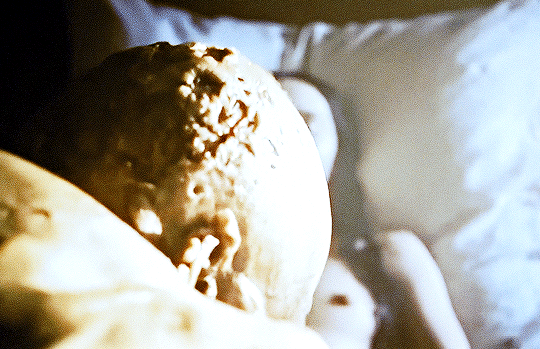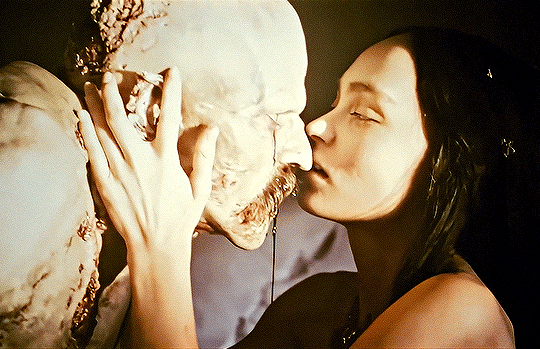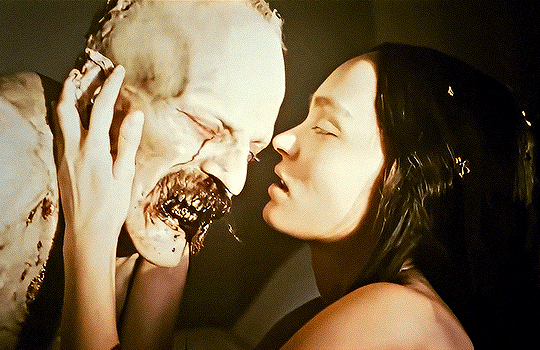𝖘𝖍𝖊/𝖍𝖊𝖗 ⸸ 22 ⸸ 🇮🇹 ⸸ 🔞 ⸸ 𝖆𝖗𝖙𝖎𝖘𝖙, 𝖘𝖔𝖗𝖙 𝖔𝖋 ⸸ 𝖎𝖓𝖘𝖙𝖆: @𝖗𝖆𝖛𝖊𝖓.𝖔𝖛𝖘 ⸸ 𝖙𝖜𝖎𝖙𝖙𝖊𝖗: @𝖗𝖆𝖛𝖊𝖓𝖔𝖛𝖘
Last active 3 hours ago
Don't wanna be here? Send us removal request.
Text

Did I disappoint you?
#the band ghost#ghost#ghost bc#papa emeritus iv#papa emeritus 4#papa emeritus fanart#frater imperator#copia#ghost fanart#my art
68 notes
·
View notes
Text

Seething over V all by yourself, handsome?
#the band ghost#ghost#ghost bc#frater imperator#papa emeritus 4#papa emeritus iv#copia#papa emeritus fanart#ghost fanart#papa v perpetua#my art
135 notes
·
View notes
Text

Solve et Coagula
#the band ghost#ghost#ghost bc#ghost band#papa v perpetua#papa v#perpetua ghost#papa emeritus 4#papa emeritus iv#copia#papa emeritus fanart#ghost fanart#my art
233 notes
·
View notes
Text

And I miss my lover, man
#the band ghost#ghost#ghost bc#papa emeritus iv#papa emeritus 4#copia#frater imperator#ghost copia#papa emeritus fanart#ghost fanart#my art
330 notes
·
View notes
Text

An nescitis quoniam membra vestra
Templum est Spiritus Sancti
Qui in vobis est
Quem habetis a Deo?
Et non estis vestri
#the band ghost#ghost#ghost bc#papa v perpetua#papa v#papa v ghost#papa v fanart#perpetua ghost#satanized#my art
65 notes
·
View notes
Text

Who was that shape in the shadows? Whose is that face in the mask?
#the band ghost#ghost#ghost bc#ghost band#ghost fanart#ghost art#papa v perpetua#papa v ghost#papa v fanart#papa v#satanized#skeleta#my art
418 notes
·
View notes
Text

Blasphemy! Heresy! ⸸
#the band ghost#ghost#ghost bc#ghost band#ghost fanart#papa v perpetua#papa v ghost#papa v fanart#satanized#skeleta#my art
276 notes
·
View notes
Text
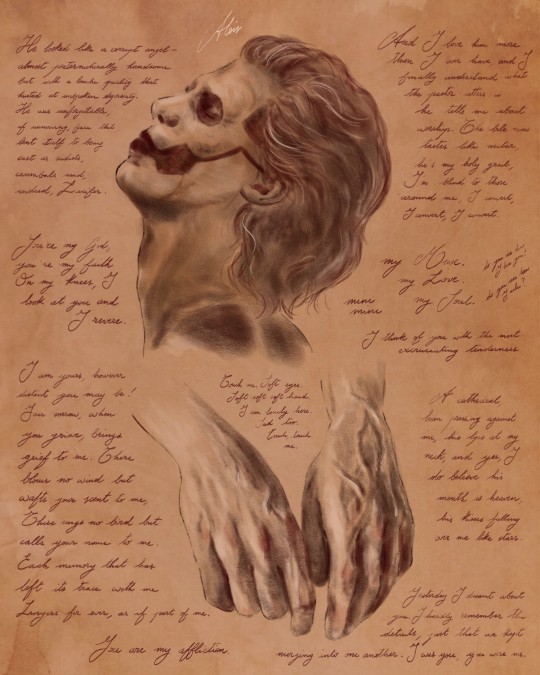
To be loved by an artist is to live forever... In perpetuum.
#the band ghost#ghost#ghost bc#band ghost#papa emeritus iv#copia#papa emeritus 4#frater imperator#papa emeritus fanart#papa emeritus v#ghost fanart#my art
523 notes
·
View notes
Text
Did you know that my comms are open? 👀
Recent examples:

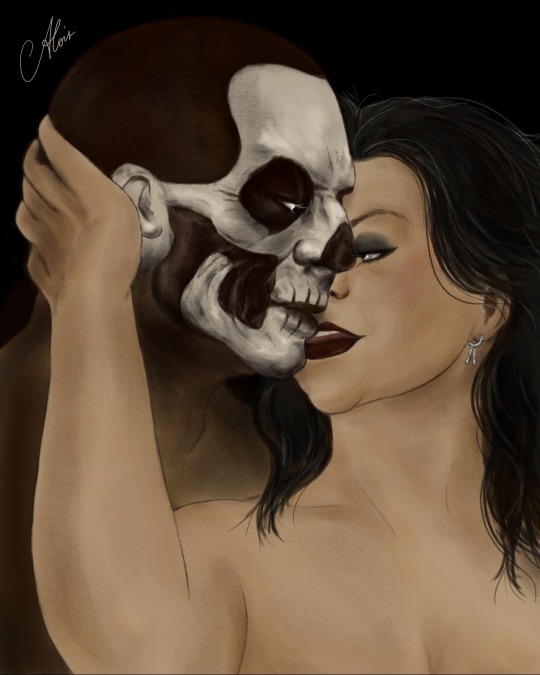
Check out my IG for info 🫶🏻
#the band ghost#ghost#ghost bc#cardinal copia#papa emeritus 2#oc#sister of sin#ghost fanart#fanart#my art
32 notes
·
View notes
Text

"Eat me, my love, live on me with animal-thirst... Enter me and become my hunger for you."
#nosferatu#nosferatu 2024#robert eggers#count orlok#ellen hutter#bill skarsgård#lily rose depp#nosferatu fanart#gothic#gothic horror#dracula#vampire#my art
50 notes
·
View notes
Text
"Priestess of Isis", "Enchantress" and "Sylph": Occult References in Ellen Hutter’s character in “Nosferatu” (2024)
In another post I analyzed Ellen Hutter’s character in the 2024 adaptation of “Nosferatu” through literary lenses of the Gothic female genre. Now, I want to dwell on her occult and mystical symbolism, and how this translates in her connection with Count Orlok, the undead demon of the story, who’s bound to her. But how and why? And what exactly is she in this story?
“In heathen times you might have been a great priestess of Isis.”
Von Franz tells this to Ellen in their last scene together, because he recognizes her spiritual power and ability to communicate with the spiritual world. Her “hysterical fits” and “epilepsies” also mirror the trance-like states of Pagan priestesses. She inhabits the “borderland”, a peripheral area, a portal between the two worlds: the physical (matter) and the spiritual.

“The pupil is expanded. It does not contract naturally to the light. […] A second sight. She’s no longer here. […] She communes now with another realm.”

“Somnambulists afflicted with these perversions [hysterics and lunatics] oft possess a gift: a sight into the borderland. […] I believe she has always been highly conductive to cosmic forces, uniquely so.”
Von Franz says demons usually obsess over “those whose lower animal functions dominate”, because they like them and seek them out. He elaborates: hysterics and lunatics. However, he says this before he actually gets to know Ellen, and he quickly realizes that’s not the case here. Because Ellen is the one who awoke Orlok from his centuries old sleep. Which is confirmed by three characters in the narrative: Orlok, Ellen herself and Von Franz.
O’er centuries, a loathsome beast I lay within the darkest pit… ‘til you did wake me, enchantress, and stirred me from my grave. You are my affliction.

Which leads me to the next topic:
Why Isis, of all deities?
Isis and Osiris
Isis is one of the major Egyptian deities. She’s more commonly known for her role as “Mother Goddess” of Horus, the Sun god. Isis had mighty magical powers, greater than that of all other gods, she governed the natural world, healing and wield power over Fate itself.
“Destiny!” Ellen cries out to Anna, while looking at the sea. “Providence!” Herr Knock screams throughout the narrative. “You run in vain! You cannot out-run your destiny!” Von Franz laughs in religious fervor as Thomas tries to save Ellen.
Isis is also connected with the themes of death, sex and rebirth in Egyptian cosmology, due to the myth of Isis and Osiris; which are also the core themes of Robert Eggers’ adaptation of “Dracula/Nosferatu”, so it’s not coincidental.
The “Osiris Myth” is one of the major surviving pieces of Egyptian mythology. It’s a ancient tale, with its early versions dating back to the 5th Dynasty (c. 24th century B.C.). It has known several adaptations throughout Egyptian history. The most complete version is in “The Moralia” by the 1st-century scholar Plutarch of Chaeronea, a collection of essays about Greco-Roman culture; that became very popular during the Renaissance era (14-16th centuries) and the Enlightenment period (18th century) in Europe.
Isis and Osiris were brothers, and according to Ancient Egyptian religion, they were in love with one another before they were born, and enjoyed each other in the dark before they came into the world. They eventually married.
Osiris had two facets as a God: in life, he was the God of fertility, agriculture, and vegetation, being considered a “Shepherd God”; in death, he was the God of the Underworld, the judge and Lord of Dead, the afterlife and resurrection. The pharaohs of Ancient Egypt were associated with Osiris in death, because as he rose from the dead, so would they unite with him and gain eternal life through imitative magic. Which appears to be the whole deal between Orlok and Herr Knock in “Nosferatu”, as Knock seeks to gain immortality like Orlok, by serving him.
On Earth, Osiris was believed to take on the form of a bull (the sacred bull Apis). What I find interesting here is that in both the 2016 script and the 2023 script of “Nosferatu”, Orlok’s physicality is actually compared to a bull:


Osiris became king of Egypt, and taught the people how to farm and live peacefully in their villages; he had a reputation for being a powerful and wise king, loved and respected by the Egyptian people. We don’t know exactly how Eggers’ Orlok was in life, other than him being a Romanian or Hungarian nobleman and a Solomonar sorcerer who sought to achieve immortality. But if we go by Vlad III (Drakule or Dracula, the infamous “Vlad the Impaler”) biography, he’s actually considered a Romanian national hero because he defended the Romanian people from foreigner invaders (Germanics and Turks, mostly). Just throwing this out there, because it’s unsure if this is intentional or not.
Osiris and Isis had a brother, Seth (or Typhon in Plutarch essays), the God of deserts, storms, disorder and violence, who murdered Osiris to take his throne. He tricked Osiris into climbing into a wooden chest/coffin, shut the lid, sealed it shut, and threw it down the Nile River, knowing Osiris would never be able to survive. In some versions, it’s said Seth cut Osiris body into pieces and scattered them throughout Egypt. Interestingly enough, there’s a similar legend associated with Vlad the Impaler, who died in battle against the Ottomans, and, according to Leonardo Botta, the Milanese ambassador in Buda(pest), Vlad’s enemies cut his corpse into pieces, too. and his remains were never found.
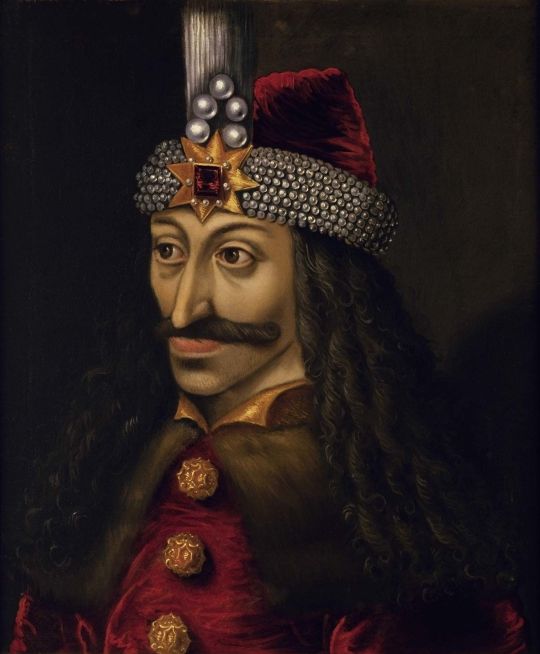

Isis is the epitome of the mourning widow in this myth, as she mourns Osiris’ death deeply. Here enters the symbolism of the lilacs in "Nosferatu", the symbolic flowers of Ellen and Orlok: in the Victorian era, they were associated with widows because they represented a memento of a deceased lover.
Can this also be a nod to “Bram Stoker’s Dracula” (1992) by Francis Ford Coppola? Where Dracula himself is the grieving widower because Elisabeta commits suicide? In the 1992 adaptation, Mina also speaks of “flowers of such frailty and beauty as to be found nowhere else”. What flowers is Mina talking about? It’s unclear, but Lilacs are native flowers to the Balkans, after all.
Isis sought for Osiris’ mangled body and with help of tree other Gods (Nepthys, Thoth and Anubis), they sew Osiris’ body back together, and then wrapped it head to toe in strips of linen, creating a mummy. Interestingly enough, Orlok’s corpse appears almost mummified at the end of the story.

In the Osiris myth, Isis uses powerful magic (incantations and magic spells) to bring her dead lover back to life; similar to Ellen who resurrects Orlok with her summoning prayer. In one version, this happened on a night of the full moon; in “Nosferatu” (2024) we also have a full moon connected to Ellen and Orlok, in the prologue, when he reveals his rotten corpse to her:

According to Ancient Egyptian funerary texts, it’s Isis sorrow, sexual desire and anger that empower her magic to be able to bring Osiris back to life. When Ellen prays for a companion of “any celestial sphere” in the prologue, she’s crying (sorrow), she’s upset because her father recoils from her now that’s she’s no longer a child (anger) and she’s in her teenage years/puberty (sexual desire). Like Isis with Osiris, it’s the combination of these emotions that power her magic to unconsciously resurrect Orlok.
However, Osiris can’t remain among the living, because he has to return to the Underworld and become King of the Afterlife. But before he goes, Osiris and Isis conceive Horus, the God of the sun and the sky, who will restore peace and order to the universe. In “Nosferatu” (2024), Von Franz says that “with Jove’s holy light” before dawn, redemption will come to the people of Wisburg and the curse of Nosferatu will be vanquished. “Jove” is Jupiter, the “King of the skies”, who’s connected with the Egyptian Horus. Horus and Ra are often merged together in Ancient Egyptian religion, making Isis and Osiris the metaphorical parents of the Sun.

In “Nosferatu” (2024), as Orlok and Ellen complete their covenant, consummate their wedding and he drinks from her, the sun is also the metaphorical result of their union. As dawn breaks, the sunlight vanquishes them both from the physical world, as they both die in the material realm.

After being buried by Isis, Osiris goes into the Underworld to rule over it. And from then on, Isis herself is also associated with funeral rites, as she would guide the souls of the dead, helping them entering the afterlife. Through her magic, Isis helped resurrecting the souls of the dead, as she did with Osiris, acting as a mother to the deceased, providing protection and nourishment.

At the end of "Nosferatu" (2024) we see Ellen fulfilling her role as “priestess of Isis” (or as Isis herself?), as the Goddess of healing, who ends the blood plague in Wisburg, but also guides her dead lover Orlok/Osiris with her into the Underworld... where he'll rule as king? Unclear.
Since we are discussing the Egyptian Gods, I have to mention Greta the Cat, Ellen’s domestic cat. Her name is an obvious homage to Greta Schröder, the actress who played Ellen Hutter in the original 1922 “Nosferatu”. Indeed, cats are predators to rats, however, the Egyptian Goddess Bastet is considered to be Isis’ daughter. She's the "cat goddess" for cats were considered sacred in Ancient Egypt. Bastet was associated with sun gods like Horus and Ra. Bastet was the goddess of pregnancy, childbirh, and protection against contagious diseases and evil spirits.
Enchantress
Orlok calls Ellen “enchantress”, but what does this mean? “Enchantress” is not only a female archetype, but has root in historical realities. Enchantresses were practitioners of feminine magic: oracles, healers, herbalists, midwives and shamanic shapeshifters. They were what’s commonly known as “witches”. These female magicians studied and practiced their art in goddess temples, mystery schools, alchemy schools and hedge schools.
The alchemists of the Middle-ages studied these dynastic lineages of “wise women”, and they had several names: enchantresses, chantresses, encantrices, or incantrix. Many physicians who founded "medicine" and "science" studied these wise women, mainly healers and their use of medicinal plants and herbs.
Ellen’s character appears to fit that of a “incantrix”. Women who used words, incantations, songs, spells and prayers to shape reality. It’s the priestess of an old religion (as Von Franz also calls her); gifted with magic power and authority to command the elements or the body by the power of their word.

Heptagrams
Orlok seal (or sigil) meaning has already been widely discussed by others (symbols of Ancient Dacian religion, mainly the figure of Zalmoxis), but what I want to mention here is the heptagram itself, the seven-pointed star. Heptagrams have several occult meanings, including warding off evil which, for obvious reasons, doesn’t fit Orlok’s character. It has meaning in Alchemy, too, as representative of the seven planets and seven substances.

The heptagram, however, is used by Aleister Crowley in his occult system Thelema (from Ancient Egyptian text) to represent a goddess/archetype: Babalon, which is also connected with Isis, Nuit, Lilith, Kali, among other goddesses and deities. At its core, it’s a goddess of female empowerment and liberation, of divine feminine. According to this occult belief, Babalon has several manifestations (sort of incarnation) and is a spiritual gateway to wisdom and enlightenment through chaos and female sexuality.

In “Nosferatu” (2024), when Ellen and Thomas are returning home, there’s a man in the streets rambling bits from the “Book of Revelations” (Apocalipse) from the Bible: “And I saw a beast rising out of the sea, owith ten horns and seven heads, with ten diadems on its horns and blasphemous names on its heads.” (Revelations, 13:1).
Indeed this passage is about Orlok arrival and how he’ll spread plague among the town. However, we have a character in the “Book of Revelations” which is connected to all of this: the Whore of Babylon, the “Mother of Prostitutes and All Abominations of the Earth”, and she rides this Beast, which is the same as Crowley’s Babalon. What Crowley did was a positive reinterpretation of this biblical figure, symbolizing liberated female sexuality by embracing the powers of the Divine Harlot.


Also known as the “Scarlet Woman” and “Great Mother”, this complex and mysterious figure was established in 1904 in “The Book of Law”, however her roots are far older, and can be found in the Enochian tradition, a magical system by John Dee and Edward Kelly, dated from the late 16th century. In the 2016 script of “Nosferatu”, Orlok spoke Enochian, so it’s clear Robert Eggers is very much aware of all of this.
Initiatrix, Creator and Destroyer, Babalon is the “Great Mother” because she represents matter, Mother Earth. Like Isis, she’s the Archetypical Mother, the Womb, the Great Sea and the Divine Blood itself. According to Crowley, the “whore/harlot” facet is about enjoying sex without the burden of reproduction; and the “mother of abominations” connects with destruction like natural catastrophes, plagues, etc. She’s the ruler of the cosmological sphere and both good and evil (as evil as elemental forces can be or are considered as).
Crowley is a man who was born and raised in the Victorian era where sexuality was to be silenced and repressed, which provides context to his occultist beliefs and his “sex magick” theories. Victorian physicians and scientists were obsessed with classification of sexual perversions, too. “Hysteria” being one example among many. Which is the historical context for Eggers adaptation of “Nosferatu”/“Dracula”, so these references are quite fitting.
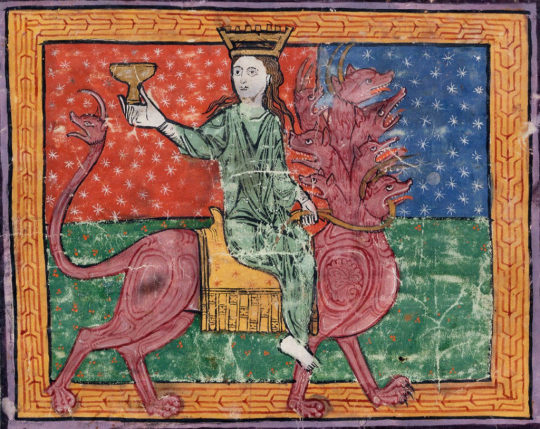
According to the Thelema, Babalon is the “Sacred Whore”, and her primary symbol is the Chalice or Graal (symbolic womb). She’s a consort to the Beast, who has seven heads, which is symbolically represented in her heptagram sigil. Crowley described her: “She rides astride the Beast; in her left hand she holds the reins, representing the passion which unites them. In her right she holds aloft the cup, the Holy Grail aflame with love and death. In this cup are mingled the elements of the sacrament of the Aeon”.
To Crowley these were not actual beings but titles/archetypes (sort of speak) in his Sex Magick beliefs: the “Scarlet Woman” is the High Priestess, and the “Beast” is the Hierophant. This fits Ellen (the priestess) and Orlok (warlock, black sorcerer) in “Nosferatu” (2024). The “Scarlet Woman” is a gateway to both the moon and the sun, and we see both associated with Ellen.
Orlok is described as a “beast” several times in the film, including by himself and by Von Franz, who also mentions Ellen’s “dark bond with beast”, and how she gave her love to the beast: "and lo the maiden fair did offer up her love unto the beast, in close embrace until the first cock crow, her willing sacrifice thus broke the curse and freed them from the plague of Nosferatu."
Orlok says Ellen’s passion is bound to him, like Babalon’s passion is united with the Beast. Babalon as “mother of abominations” also fits with how Ellen unleashed Orlok and his blood plague onto the world, bringing destruction and apocalypse.

Your passion is bound to me. […] I cannot be sated without you. […] Remember how once we were? A moment. Remember?
Thelemic followers of the Beast have been trying to call into being an older, more primeval, female force that is lacking in the Modern Age. Interestingly enough, this was the reason why Orlok became interested in Ellen in the 2016 script (which was later changed, because in the 2023 version it’s Ellen who summons Orlok): “I have sought a creature from the depths. A Eve that remembers her Eden. You are such one.” Both Crowley but more notoriously Jack Parsons have tried a bunch of incantations to conjure Babalon into being.
Oddly enough, the conjuring ritual we see Herr Knock performing at the beginning of “Nosferatu” (2024) is very similar to one of the incantations of Babalon performed by Jack Parsons: Air dagger, blood and channeling of windstorms and the Air element, over a heptagram. He also compares Ellen to a sylph; a nymph of the air element from alchemy and hermetic literature. We are told by Von Franz this is Solomonari sorcery, but is it really?

In Ophidian Thelema, Babalon is the Goddess of magick (“Heka”), of the Liberation of the Spirit (ecstasy), of the Liminal Point, of the Underworld, of Vengeance and of the Principles of Life. Their priestesses use the female body (vulva and womb) to channel their power during their magic rituals. This is similar to Ellen’s “hysterical fits” when she’s communicating with Orlok in the spiritual world, especially since “hysteria” was considered a disease caused by “wandering womb”. In the film, we also see Ellen's womb being talked about between Von Franz and Dr. Sievers during her examination, when they say her menstruation is liberal and she has too much blood in her.

The “liberation of spirit” is in the form of a Serpent, which manifests in the flesh. This notion was present in the “Book of Law”, where its said there’s the dove, and there’s the serpent, and a choice must be made. While the dove represents religion, the serpent represents the spirit. In one scene, Ellen says Orlok is like a serpent in her body; and he replies it’s not him, but her own nature, a nature she denies. Babalon says “my vocation is the serpent.”
The priestesses of Babalon are also in control of their “trances” when they access the spiritual world. In “Nosferatu” (2024) there’s a interesting scene between Ellen and Thomas (the infamous sex scene), when Ellen “comes back” from her transe when he says he’ll call for Dr. Sievers. Does this indicate Ellen is actually in control of her trance-like states?
Babalon is the guardian of the Seven Principles of the Underworld, a place of darkness and transformation. Orlok tells Ellen in the prologue “you are not for the living. You are not for human kind.” Babalon is also the goddess of the liminal point, who can access other realms. As Goddess of vengeance, Babalon punishes when life is out of balance, and exerts violence and corruption upon those who are in the wrong. Ellen unleashes Orlok onto the world, and we can interpret him bringing plague into Wisburg as Ellen’s reckoning against a society that ostracizes her and will never accept her.

All rites and initiations of the Underworld Goddesses include rites of sex and death. Which is what we see with Ellen at the end of “Nosferatu” (2024). By Thelemic occult tradition, she, the manifestation of Babalon, has sex with the Beast (Orlok), “representing the passion which unites them” and her womb (Holy Grail; cup) is “aflame with love and death” (sexual climax, orgasm, with an un-dead vampire).
I will work the work of wickedness; I will kill my heart; I will be loud and adulterous; I will be covered with jewels and rich garments; I will be shameless before all men; I will, for token thereof, will freely prostitute my body to the lusts of each and every living creature that shall desire it; I claim the Mystery of Mysteries, BABALON the Great, and the Number 156, and the robe of the Woman of Whoredomes and the Cup of Abomination. “The Great Beast: The Life of Aleister Crowley”, John Symonds, 2016

Orlok being the Beast and Ellen the manifestation of Babalon explains why she’s promise to him in the narrative, and was never meant to marry Thomas: in Thelemic tradition, the Beast is the consort of Babalon, after all. Orlok's interest in Ellen isn't predatory for its own sake; he sees her as his rightful and fated spiritual consort, which fits the "bride of Dracula" theme of the Bram Stoker original story.
This probably also mirrors the 1992 adaptation by Francis Ford Coppola, where Van Helsing calls Lucy the “Devil’s concubine”: "Hear me out, young man. Lucy is not a random victim attacked by mere accident. Do you understand? No. She is a willing recruit, a breathless follower, a wanton follower. I dare say, a devoted disciple. She is the devil's concubine! Do you understand me? Yet, we may still save her precious soul." In this adaptation, Lucy is full Crowley and Parsons “Scarlett Woman”, with red garments and red hair.


Orlok also gives Ellen three nights to accept him/her nature and complete their covenant. Some are mistakenly associating this with Jesus Christ. These “three days” are possibly connected with another Goddess associated with Babalon: Inanna (or Ishtar), the ancient Mesopotamian Goddess of love, war, fertility, sensuality and divine law. The most famous myth about this deity is her descent into the Underworld, where she spends three days and three nights dead, until she re-ascends (rebirth).
Ellen also goes through the “Myth of Inanna” in “Nosferatu” (2024), which is the theme of the heroine descending into the “Underworld”, to suffer, to be stripped bare, to die, and to be reborn in the aftermath. This is the primal Shamanic crisis. Ellen also goes through three days and nights of suffering and death (witnessing her friends and the townsfolk of Wisburg dying by the blood plague) until she joins Orlok and is reborn.
Ellen and Orlok are involved in sex magick, at the end, clearly. But with what purpose? Sex magick to Crowley has several purposes and strong creative power, conjuring, invocation, etc. He believed deliberate acts of sexual transgression were a radical form of super-human power that promised to explode the narrow boundaries of Western Christian society and open the way for a whole new era of human history. Which is probably what’s happening here? A symbolic ending to the sexually repressed Victorian era as Western societies moved toward a more open-minded and accepting view of sexuality? Or it’s Ellen reborn as a Goddess of the Underworld (return to spiritual state), after going through a initiation rite of sex and death, as she breaks free from her human form? Or both?
Or it can be a nod to Crowley idea of sex magick to unleash supreme creative power to generate a godlike child? This can mirror the Osiris and Isis myth, of Horus (the Sun) as their metaphorical child, like it is for Ellen and Orlok here, as the end result of their union.
Alchemy
Alchemy, at its core, is the transmutation of base materials (lead, etc.) into noble materials (gold), and the pursuit of immortality (“philosopher’s stone”). Occultists reinterpreted this as a spiritual quest of self-transformation, purification and regeneration of the human soul. Hence physical death being seen as a gateway to another life (rebirth); which is the symbolism of the final scene of “Nosferatu” (2024).

Both Ellen and Orlok evolve from a diseased and corruptive state (physical world) into regenerative and perfect state (spiritual world), after being purified by fire (the Sun). Their old selves are empty shells, as their spirits ascend. This also finds parallel in the myth of Isis and Osiris, as they both went from “daemons” to Gods in the Plutarch essay.
And this also finds parallel in the 1992 adaptation when Vlad/Dracula ascends to the Heavens and is reunited with Elisabeta’s soul. Is this intentional? Are we dealing with reincarnation themes in Eggers' adaptation, as well? According to occultists both Babalon and the Beast have had many manifestations (reincarnations) in the physical world throughout the centuries, after all.

Orlok asking Ellen to remember their shared past, is also an interesting nod to Vlad and Mina in the Coppola's adaptation (their OST is called "Love Remembered"): "I have crossed oceans of time to find you." and “I have sought a creature from the depths. A Eve that remembers her Eden. You are such one.” in the 2016 "Nosferatu" script. Which didn't change all that much in 2023, except we don't have an actual explanation for Orlok interest in Ellen, other than her waking him from his centuries old sleep (resurrection).
276 notes
·
View notes
Text

I am an appetite, nothing more.
#nosferatu#nosferatu 2024#robert eggers#murnau#nosferatu the vampyre#dracula#vampire#count orlok#ellen hutter#my art#fanart#nosferatu fanart
266 notes
·
View notes
Text

And then I find myself angry at the Moon, for She can smile and look at you each and every night, while I cannot.
#the band ghost#ghost#ghost bc#papa emeritus iv#copia#papa emeritus 4#papa emeritus fanart#ghost fanart#my art
616 notes
·
View notes

